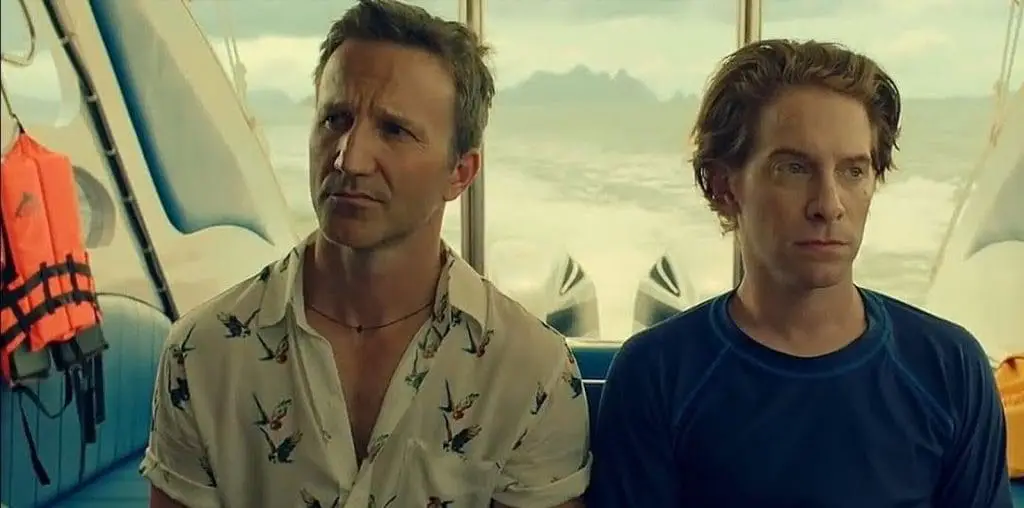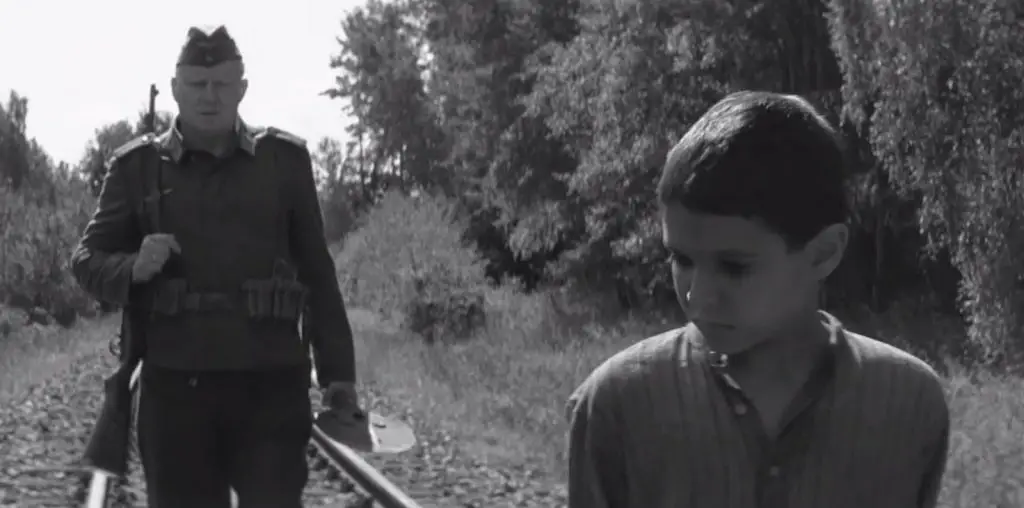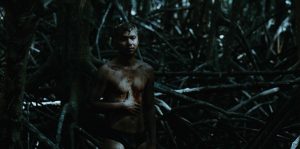
LOCARNO FILM FESTIVAL 2021 REVIEW! Giant manta rays boast the largest brains of any fish studied so far. They use that power to distinguish between objects, learn, and memorize. Similarly, the silent protagonist of Phuttiphong Aroonpheng’s unsettling drama, Manta Ray, seems to be learning and memorizing after being nourished back to life. However, it’s left to the audience to uncover the entire puzzle as the plot unravels in leisurely fragments, raising more questions than answers. Spare and laconic almost to a fault, the film nevertheless haunts with its indelible imagery and enigmatic vibes.
A nameless Thai fisherman (Wanlop Rungkumjad) discovers a barely alive Rohingya man (Aphisit Hama) entangled in the thick roots of a swamp. There’s an open wound on the man’s chest; the fisherman takes him to a hospital, then brings him home, an IV tube stuck to the semi-conscious man’s arm. A painful process of nursing the man back to health follows. While he regains the ability to perform basic tasks, the man’s memory seems lost, along with his speech. So the fisherman calls him Thongchai, after a superstar singer. He teaches Thongchai how to ride the scooter, takes him fishing; he even divulges his painful past, which involves his traitorous ex-wife, Saijai (Rasmee Wayrana).
One day, the fisherman goes missing. Thongchai is told that he drowned in an unfortunate accident. He doesn’t seem too affected and soon resumes his savior fisherman’s duties. Kicked out by her sleazebag lover, Saijai also happens to return, with nowhere else to go. Before they know it, she and Thongchai are enjoying an intimate moment in the nearby hot springs. He dyes his hair, increasingly resembling the fisherman. Just as he’s comfortably settling into the fisherman’s life, something surfaces, and the audience is forced to reevaluate the preceding events.
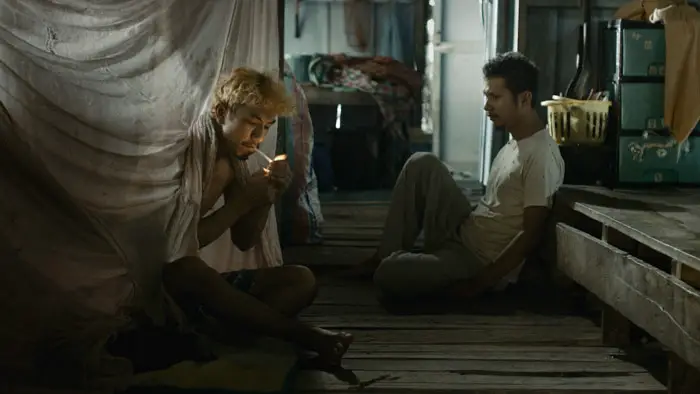
“…discovers a barely alive body entangled in the thick roots of a swamp.”
Aroonpheng does a splendid job conveying both the griminess and beauty of a coastal Thai village. The verisimilitude is undeniable. Manta Ray is far from the idyllic portrait of Southeast Asia Western audiences are used to. In Aroonpheng’s Thailand, bodies are found and resurrected, while others are lost forever; human beings are stranded in between lousy factory jobs; morals and ethics are vague, ambiguous, emotions colliding with the inherent need to survive. The filmmaker makes a searing statement about the plight of the Rohingya people, widely regarded as the most persecuted in the world, his wordless film exemplifying their displacement and shredding of identity. And then there’s all the fish: the fish markets, the arduous process of fishing, the stink of fish almost emanating off the screen.
Glimpses of the human spirit, the loveliness found in the murk, provide a powerful counterpoint to both the melancholy and the impenetrability. The fisherman’s bond with Thongchai, as imposed as it may be, blossoms in scenes like the two men slow-dancing with each other to an ethereal track, surrounded by twinkling lights, or sharing a particularly colorful Ferris Wheel ride, eyes closed, basking in the moment. Whether it’s Thongchai sitting with his feet hovering inches above luminescent water, or Saijai belting out a heartbreaking song, Manta Ray certainly has its share of wonderful moments.
Why is the fisherman so taken by Thongchai, adopting him, almost like a pet, then sculpting him into someone like him? What exactly happens at the end? Some may find the prevailing ambiguity alluring, perfectly fitting for an abstract rumination on identity and a country’s political regime. Others may be left desiring more closure. What’s undeniable is the uniqueness and otherworldly beauty of the feature, not dissimilar to its titular creature.
Manta Ray screened at the 2021 Locarno Film Festival.
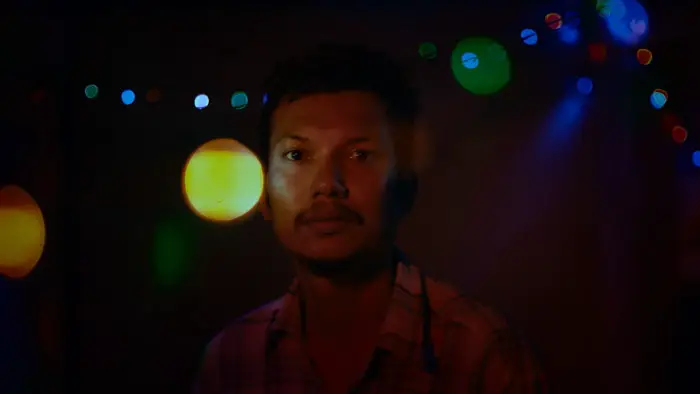
"…haunts with its indelible imagery and enigmatic vibes."
